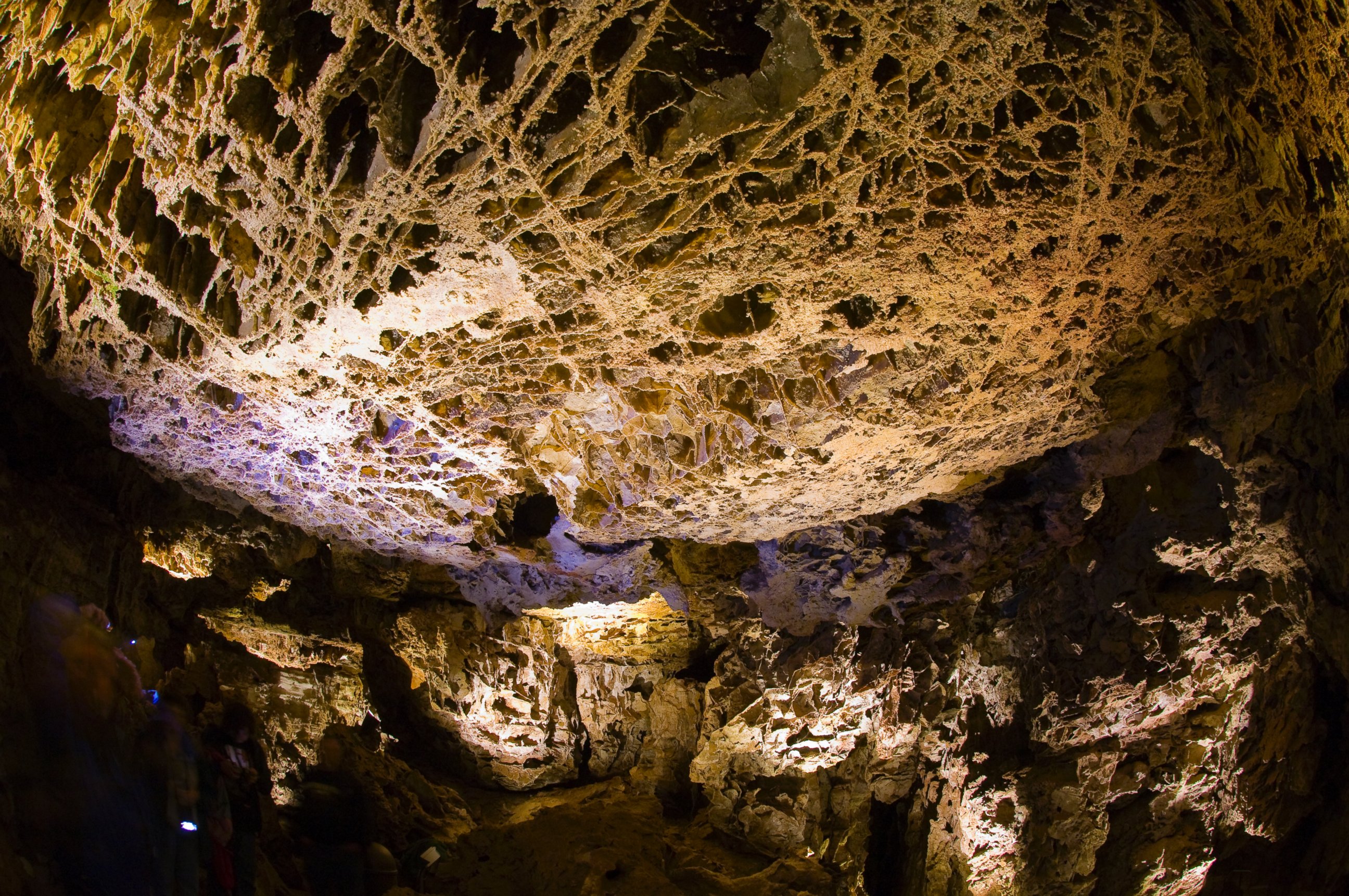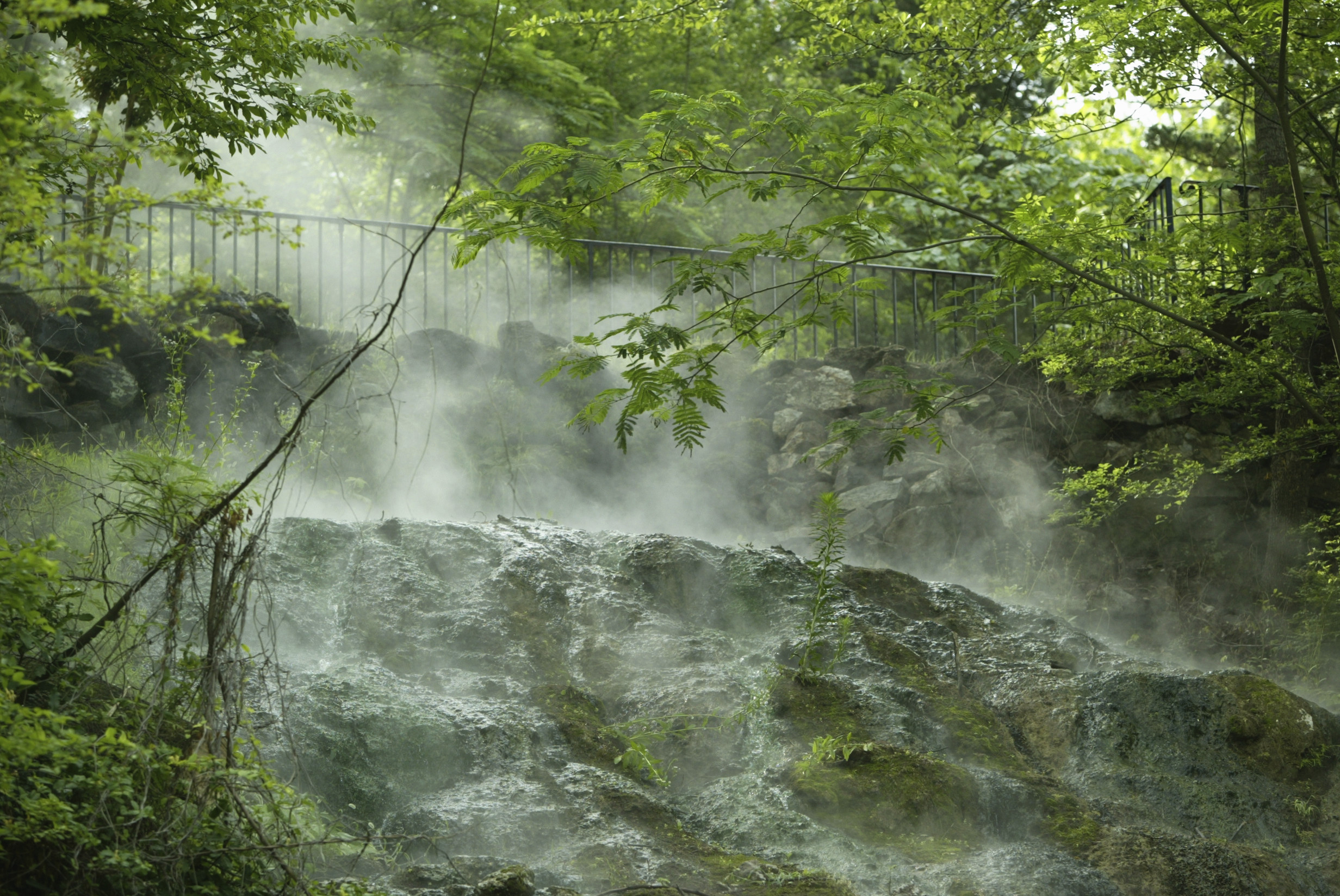See This, Skip That: Celebrate National Park Service's Smallest Parks
Here's a look at five of the tiniest national parks.
— -- The National Park Service is celebrating! Aug. 25 marks its 100th birthday as the steward of millions of acres of gorgeous American land.
The National Park Service (NPS) manages 59 national parks today, with many of the biggest -- like Denali, with its six million acres, and Yellowstone, covering more than two million acres and nabbing much of the public’s attention. In 2015, more than 307 million recreation seekers visited national parks.
But when it comes to the NPS, size doesn’t matter, since Mother Nature often reveals her beauty in the smallest of spaces. Here’s a look at five of the United States’ tiniest national parks, where small acreage always comes with big appeal.
Skip Wrangell-St. Elias, Visit Hot Springs
In all its 13 million-acre grandeur, Alaska’s Wrangell-St. Elias is America’s largest national park. This rugged expanse, teeming with diverse wildlife and home to some of the largest volcanoes in North America, is popular with avid adventure travelers.
On the other side of the size spectrum, clocking in at a comparatively diminutive 5,500 acres, is Hot Springs National Park, America’s smallest. Easy access makes this an attractive spot: It’s just outside downtown Hot Springs, Arkansas and an hour’s drive from the Bill and Hillary Clinton National Airport in Little Rock. But the real draw is the geothermal waters that bubble up from a fault along Hot Springs Mountain and that can top 140 degrees. Back in the day, they lured bathers seeking curative potential, giving Hot Springs the nickname, America’s Spa.
Today, you can soak in the hot springs water in indoor pools or experience a European-style spa soak at Buckstaff Bath Houses. If you’d rather stay dry, bring a picnic or hike the 26 miles of trails.

Skip Hawaii Volcanoes, Visit Haleakala
A sweeping volcanic landscape helps the Big Island of Hawaii stand out from its neighboring Hawaiian islands. That’s thanks to Hawaii Volcanoes National Park, which stretches across more than 215,000 acres and encompasses the two active volcanoes of Kilauea and Mauna Loa.
Don’t let size overshadow the appeal of much smaller Haleakala National Park, located on the beautiful island of Maui. Spanning 30,000 acres, this is America’s seventh smallest park, but with tons to offer. Super early bike tours are popular, since they can include sunrise experiences at the rim of Haleakala’s crater (at a summit of 10,000 feet) and self-guided downhill bike rides.
The coastal district of Kipahulu, past the famous town of Hana, offers several seaside hiking trails, waterfalls and breathtaking views; swimming conditions here can be rough, though. The subtropical rain forest setting further inland is popular with backpackers and campers, and is home to three historic wilderness cabins that you can reserve through the NPS. In many ways, Haleakala is a sacred landscape, both as a protected area for several endangered species and as a locals’ reminder of the link between the land and its people.
Skip Death Valley, Visit Pinnacles
California is home to several national parks, including Joshua Tree to the south, Redwood to the north and the Channel Islands off the Central Coast. Death Valley is as famous for its breadth, at 3.4 million acres, it’s the country’s sixth largest national park and the largest park south of Alaska. As for its topographic uniqueness: As the lowest point in the U.S., it sees record summer heat and yet a fascinating diversity of fauna, birds and even fish.
But Pinnacles is getting a lot of buzz these days, too, as the nation’s newest national park and, at less than 27,000 acres, the smallest one in California. Located 80 miles south of San Jose, the park’s tent sites and RV hookups appeal to campers. There’s also fascinating diversity here, with a landscape that ranges from canyon to chaparral to oak woodlands. The park is also teeming with reptiles, amphibians and more than 160 species of birds, including eagles and the famous California condor. Keep in mind: There’s an east and west entrance to Pinnacles, and there are no connecting roads between them.

Skip the Great Smoky Mountains, Visit Congaree
The more than half million acres that make up Great Smoky Mountains National Park stretch from Tennessee into North Carolina. It’s the most visited national park, welcoming more than 10 million nature lovers in 2015 with its gorgeous ancient mountains diverse wildlife and historic homes.
Right next door, in South Carolina, Congaree National Park offers natural wonder all its own. Located 23 miles from Columbia Metropolitan Airport, Congaree, which is comparatively small at just over 26,000 acres, is easy to access. It’s also unique: “It’s the largest intact expanse of old growth bottomland hardwood forest remaining in the country,” says my colleague Hilary Solan, a deal expert in Travelzoo’s Chicago office.
The park is rich in biodiversity, fueled by the flowing waters of the Congaree and Wateree Rivers that flow through the park, dispersing nutrients. Hikers flock here, trails range from one to 12 miles, and the waters offer plenty of fishing and canoeing options. Camping here is tent only, with both front and backcountry options.
Skip Badlands, Visit Wind Cave
South Dakota is home to two national parks. Badlands, with its quarter million acres, is the biggest and the rugged landscape contains one of the richest fossil beds on the planet. Historic Mount Rushmore National Monument is nearby.
Wind Cave National Park may offer a more intimate nature experience, though. Its 26,000 acres, which make it the sixth smallest national park in the country, are defined by hillside forests and rolling prairies, and bison, elk and antelope roam free here. The neatest marvel here exists underground -- one of the world’s longest and most complex caves, with more than 143 miles of passages. The limestone, composed of fragments of calcium carbonate seashells, dates back 350 million years.
All cave tours, including one by candlelight, are ranger-guided; avoid summer’s peak months, as well as Tuesdays and Wednesdays, for shorter wait times. Wind Cave also offers more than 30 miles of hiking trails for all skills levels. Camping comes with some restrictions, to minimize impact on soil and vegetation.
Gabe Saglie is Senior Editor for Travelzoo, which features exclusive deals to hotels close to many of the country’s national parks.




